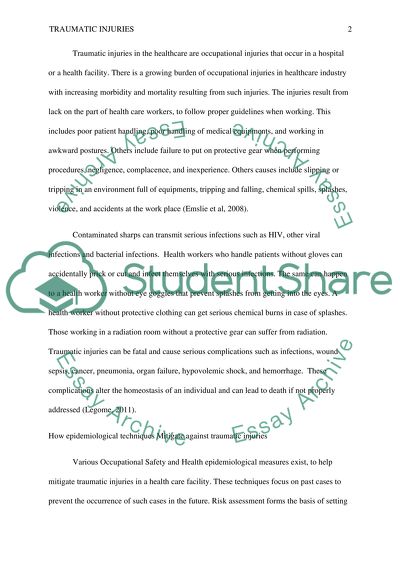Cite this document
(“Traumatic Injuries in Health Care Case Study Example | Topics and Well Written Essays - 1000 words”, n.d.)
Traumatic Injuries in Health Care Case Study Example | Topics and Well Written Essays - 1000 words. Retrieved from https://studentshare.org/health-sciences-medicine/1459223-traumatic-injuries-in-health-care
Traumatic Injuries in Health Care Case Study Example | Topics and Well Written Essays - 1000 words. Retrieved from https://studentshare.org/health-sciences-medicine/1459223-traumatic-injuries-in-health-care
(Traumatic Injuries in Health Care Case Study Example | Topics and Well Written Essays - 1000 Words)
Traumatic Injuries in Health Care Case Study Example | Topics and Well Written Essays - 1000 Words. https://studentshare.org/health-sciences-medicine/1459223-traumatic-injuries-in-health-care.
Traumatic Injuries in Health Care Case Study Example | Topics and Well Written Essays - 1000 Words. https://studentshare.org/health-sciences-medicine/1459223-traumatic-injuries-in-health-care.
“Traumatic Injuries in Health Care Case Study Example | Topics and Well Written Essays - 1000 Words”, n.d. https://studentshare.org/health-sciences-medicine/1459223-traumatic-injuries-in-health-care.


